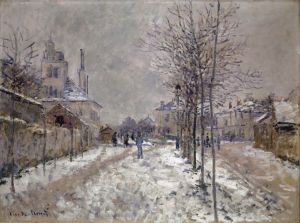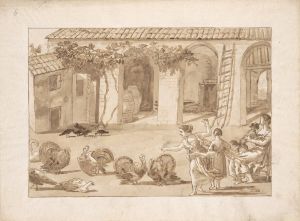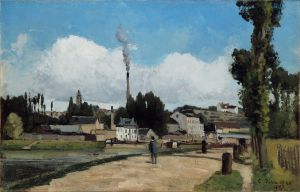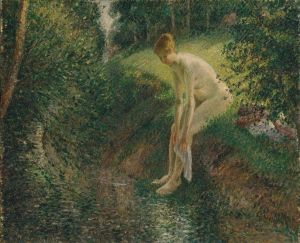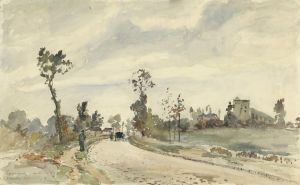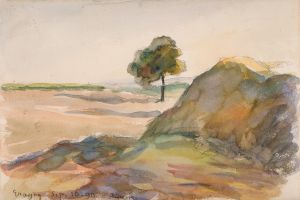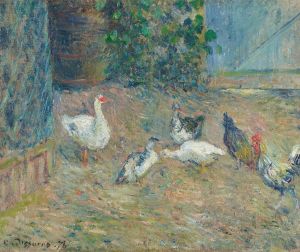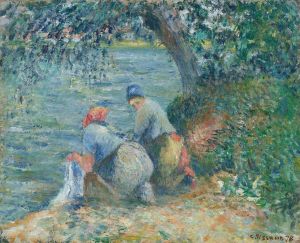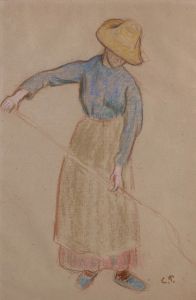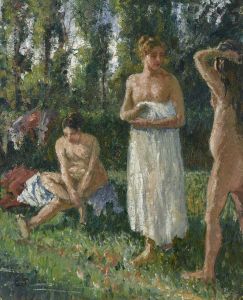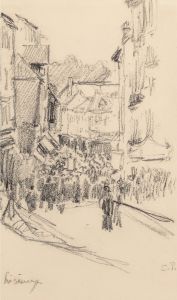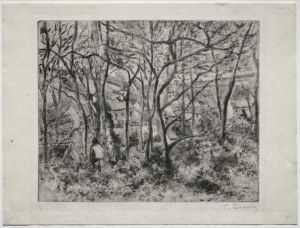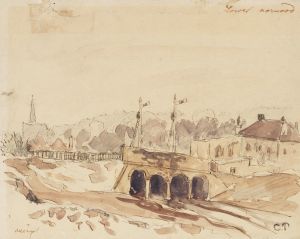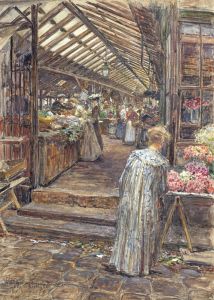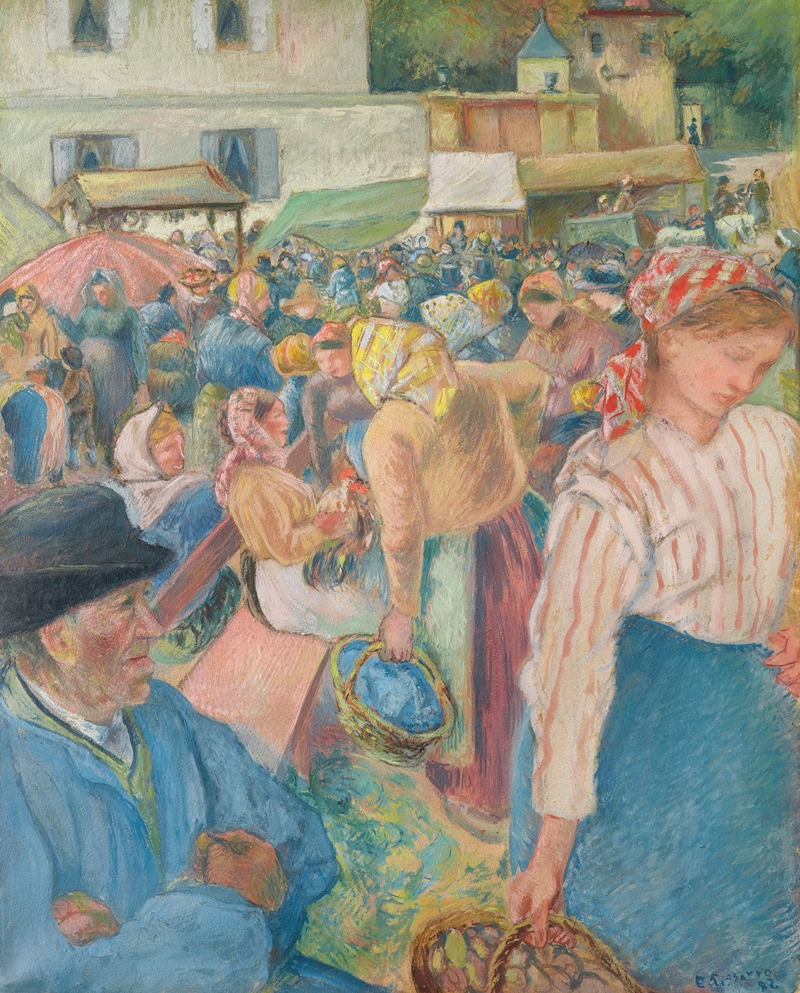
Marché à la volaille, Pontoise
A hand-painted replica of Camille Pissarro’s masterpiece Marché à la volaille, Pontoise, meticulously crafted by professional artists to capture the true essence of the original. Each piece is created with museum-quality canvas and rare mineral pigments, carefully painted by experienced artists with delicate brushstrokes and rich, layered colors to perfectly recreate the texture of the original artwork. Unlike machine-printed reproductions, this hand-painted version brings the painting to life, infused with the artist’s emotions and skill in every stroke. Whether for personal collection or home decoration, it instantly elevates the artistic atmosphere of any space.
Camille Pissarro's "Marché à la volaille, Pontoise" is a notable work by the renowned French Impressionist painter, created in 1882. Pissarro, born on July 10, 1830, in St. Thomas, Danish West Indies, was a pivotal figure in the Impressionist movement, known for his innovative techniques and dedication to capturing the nuances of rural and urban life. His work often depicted scenes of everyday life, and "Marché à la volaille, Pontoise" is a quintessential example of his focus on rural settings and market scenes.
The painting portrays a bustling poultry market in the town of Pontoise, located in the Île-de-France region, northwest of Paris. Pontoise was a frequent subject in Pissarro's work, as he lived there for several years and found inspiration in its landscapes and daily activities. The market scene is depicted with Pissarro's characteristic attention to detail and his ability to convey the atmosphere of the setting. The composition captures the lively interaction between vendors and customers, with various figures engaged in the buying and selling of poultry.
Pissarro's use of color and light in "Marché à la volaille, Pontoise" exemplifies the Impressionist style. The painting features a palette of soft, muted colors, with subtle variations in tone that suggest the play of natural light across the scene. Pissarro's brushwork is loose and fluid, allowing for a sense of movement and spontaneity that brings the market to life. This technique helps to convey the transient nature of the scene, capturing a moment in time with immediacy and vibrancy.
Throughout his career, Pissarro was deeply committed to the principles of Impressionism, often working en plein air to capture the effects of light and atmosphere directly from nature. His approach to painting was both methodical and experimental, as he continuously sought to refine his technique and explore new ways of representing the world around him. In "Marché à la volaille, Pontoise," Pissarro's dedication to these principles is evident in the way he captures the essence of the market scene, focusing on the interplay of light, color, and form.
Pissarro's influence on the Impressionist movement was significant, and he played a crucial role in organizing the first Impressionist exhibition in 1874. He was a mentor to several younger artists, including Paul Cézanne and Paul Gauguin, and his work was instrumental in shaping the direction of modern art. "Marché à la volaille, Pontoise" is a testament to Pissarro's skill as an artist and his ability to capture the beauty and complexity of everyday life.
Today, Pissarro's works are held in high regard and are featured in major art collections around the world. "Marché à la volaille, Pontoise" is appreciated not only for its artistic merit but also for its historical significance, offering a glimpse into the life and culture of 19th-century France. Pissarro's ability to depict the ordinary with such depth and sensitivity continues to resonate with audiences, ensuring his place as one of the leading figures of the Impressionist movement.





